From Toko Lodge we drove to the western gate (the Galton Gate) into Etosha National Park, which, along with the Namib Dunes, is the leading tourist attraction in Namibia. Most of the western part of the Park is Mopane woodland, interspersed with granite hills and outcrops. The drought has resulted in severely dry conditions throughout the Park. Etosha is the largest and most important of Namibia’s conservation areas. Large game animals and birds are present in good numbers.
There are 3 lodges within the Park, all government run. The lodges and, in particular the food served at the lodges, were outstanding. Because of the many wild animals, we were not allowed to get out of our vehicle at any time, unless within the fence at one of the lodge areas. Moreover, the lodges close their gates at 7:00 p.m. (sundown) and they remain closed until 6:00 a.m, or so (sunrise). We had to be inside the fence within those hours. At each of the lodge areas, however, is a lighted water hole which attracts animals that can be viewed at all hours of the day and night.
From Galton Gate, we drove toward Okaukuejo Lodge where we would spend the night. Among the first animals seen as we moved away from the Gate were Black-faced Impala, a subspecies of Impala found only in Namibia.
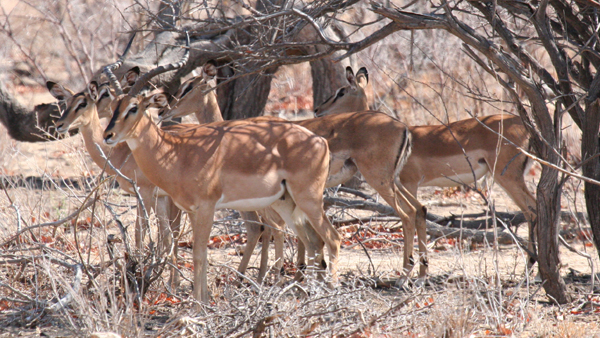
The Black-faced Impala were just one of the 8 species of African Antelope we saw at Etosha. The others were Red Hartebeest, Springbok, Kirk’s Dik-Dik, Oryx, (also known as Gemsbok), Steenbok, Greater Kudu, and Blue Wildebeest.
At the waterholes we saw Lions, Black-backed Jackals, Elephants, Blue Wildebeests, Springbok, Oryx, and much more.
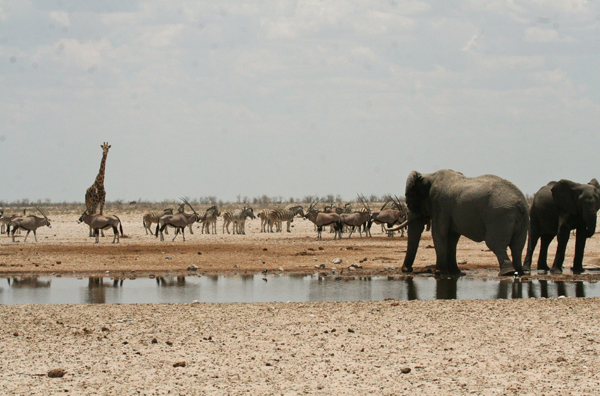
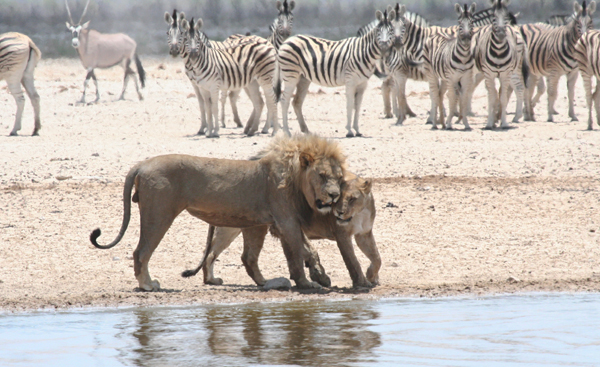
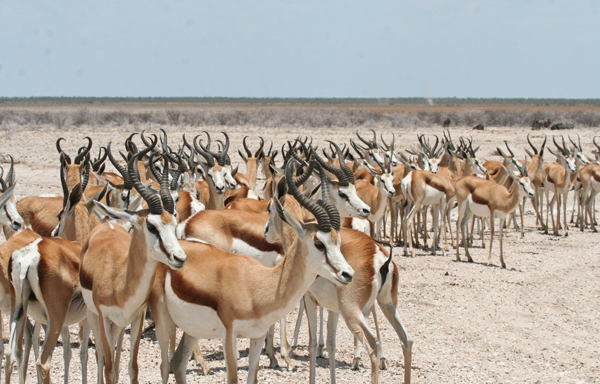
In the category of “life is tough out there”, the Ostrich action shown below involves a female ostrich killing the chicks of a male/female pair in order to get the male to mate with her.
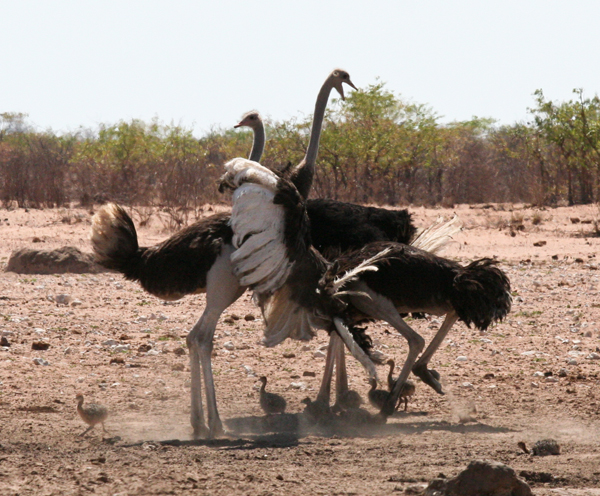
Although the main attraction in the park is the abundant wild game, some new birds were found there as well, including
White-headed Vultures
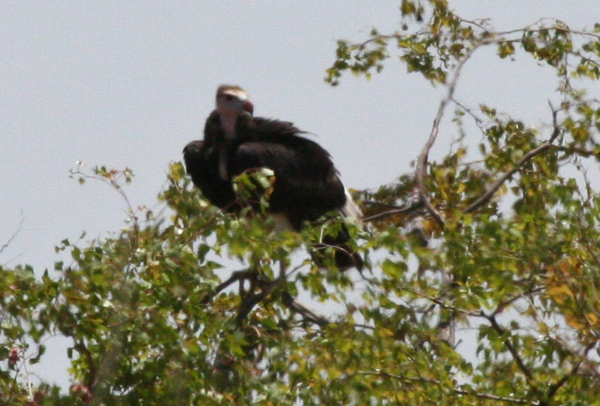
Tawny Eagle
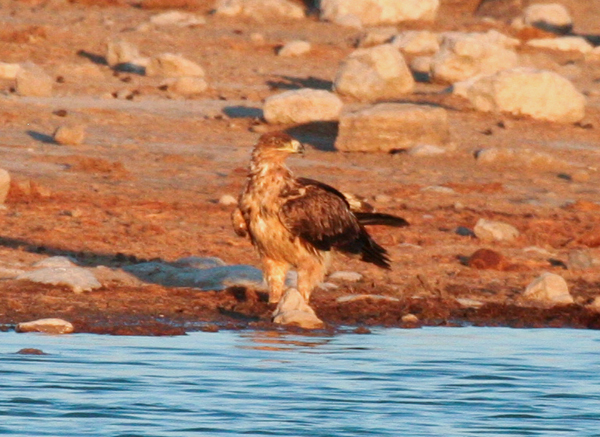
Double-banded Courser
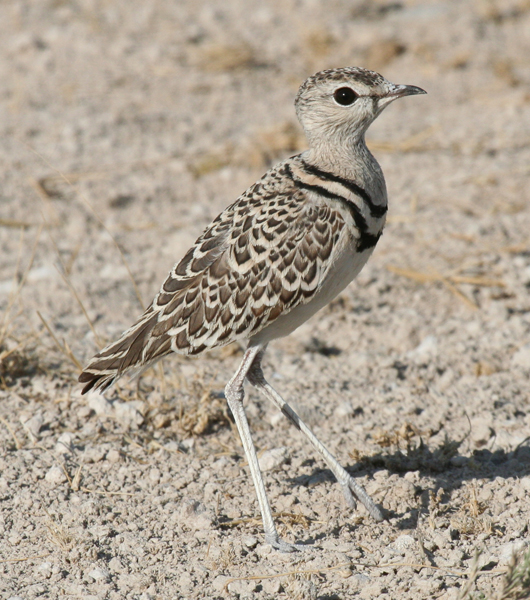
Temminck’s Courser
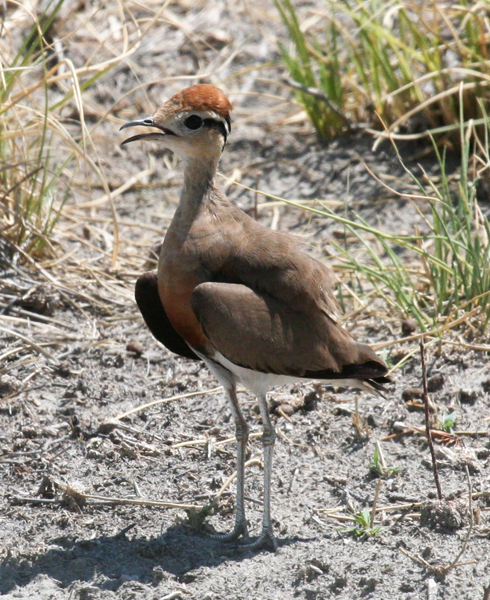
Burchell’s Sandgrouse
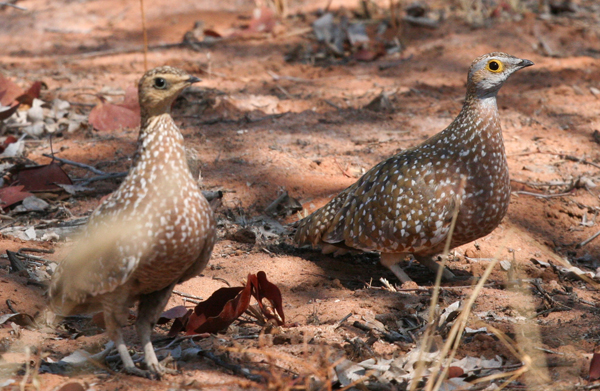
Namaqua Dove
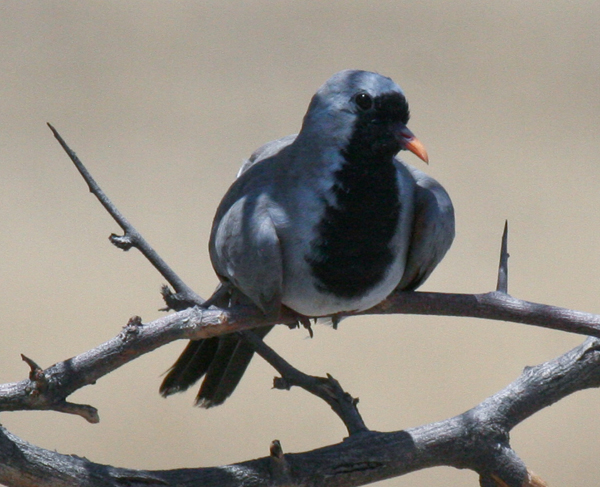
After dinner at the Okaukuejo Lodge, we saw our first and only Black Rhinos at the Lodge water hole. The arrival of the Rhino eased the fears of the 11 giraffes that had appeared, very tentatively, on the horizon and advanced ever so slowly in ghostly formation toward the lighted waterhole until they determined the source of the noise they were picking up was the Rhino and her baby, and not lions.
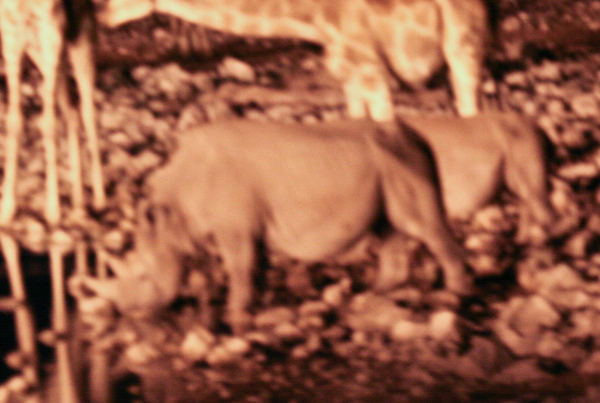
Giraffe and Kudu
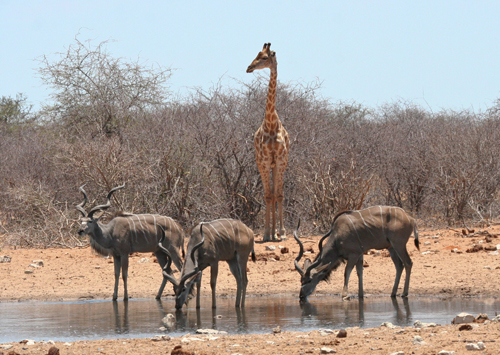
On November 10th (day 8 or our trip) we travelled further east through the park to Halili Camp. Not much new showed, but toward the end of the day we came upon a small herd of elephants, including a couple of young.

New birds for the day were:
Secretarybird
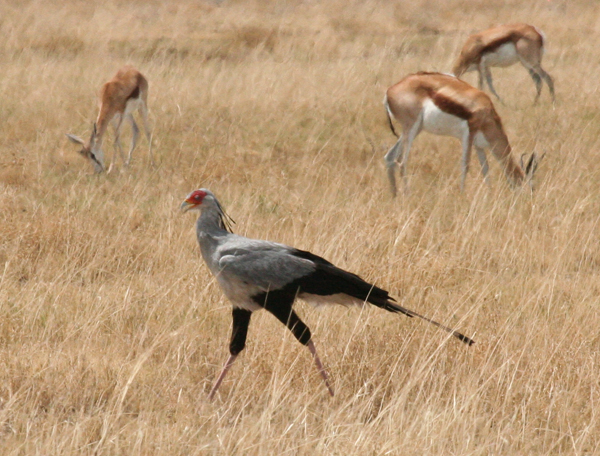
Cinnamon-breasted Buntings
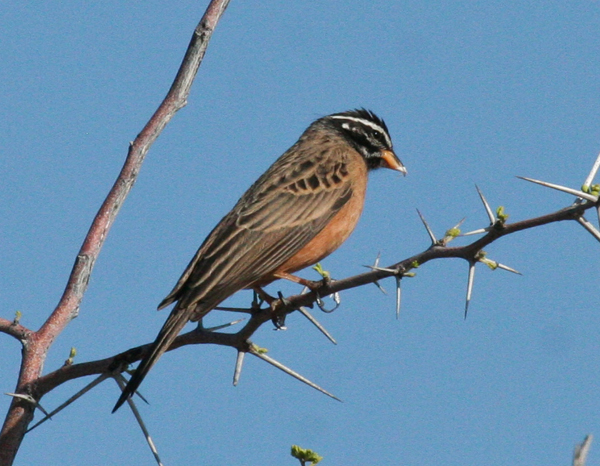
Golden-breasted Buntings
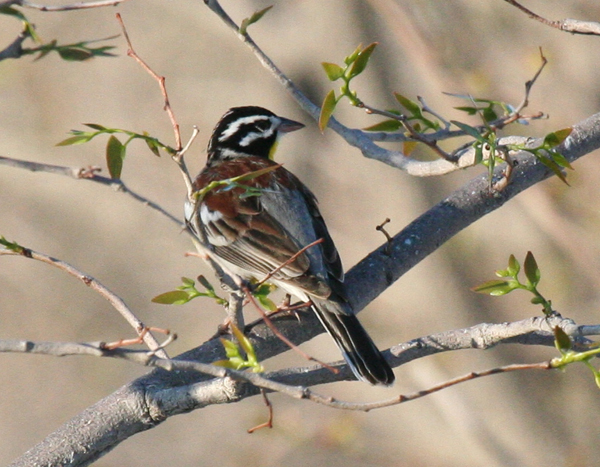
On November 11 (day 9 of the trip) we left Halili Camp to drive toward our evening lodging, Namutoni, the eastern-most camp within the Park.
Today we saw a lot of plains game and several Spotted Hyenas.

The highlight of the day came late in the afternoon when we drove the famous Dik-Dik Drive, where we had great views of cute little Kirk’s Dik-Diks, which weigh around 10 pounds, compared to their largest antelope cousin, the Eland, which weighs nearly 2,000 pounds.

We also saw:
Swainson’s Francolins
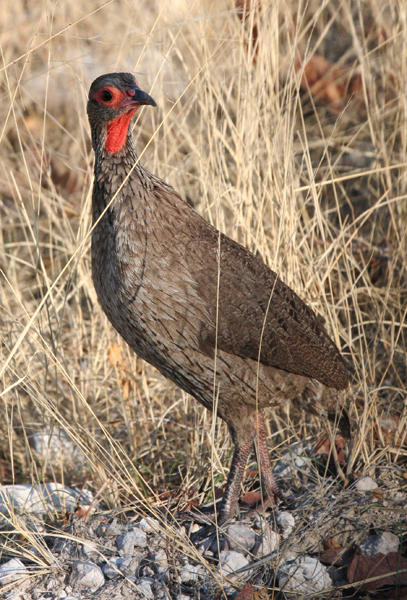
Southern Red-billed Hornbills
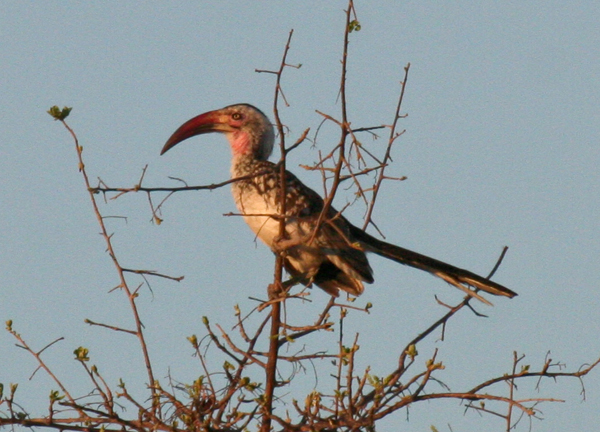
Grey Go-away Birds
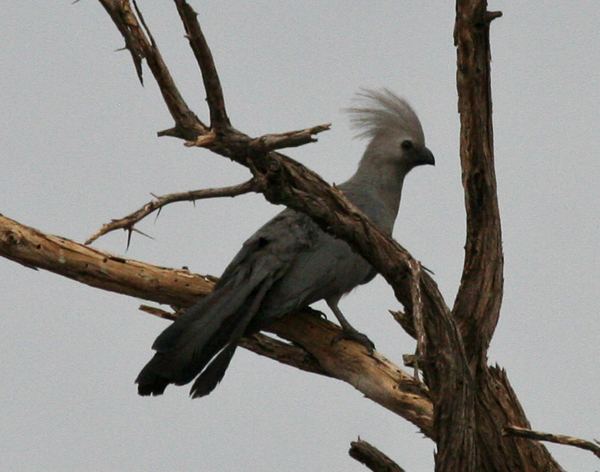
We stopped for a look at the animals at the Klein Namutoni waterhole, where we saw several Spotted Hyena, Black-faced Impala and Elephants. Steve had to put the pedal to metal to get us back to camp before the gate closed, and we barely made it as the sun set and the gate was coming down.
On the 12th we saw Red-billed Buffalo Weavers, Jacobin Cuckoos and White-bellied Sunbirds before leaving the Lodge ground. We then left the Park via the east gate and visited the private Mokuti Lodge. There we saw:
Yellow-breasted Apalis
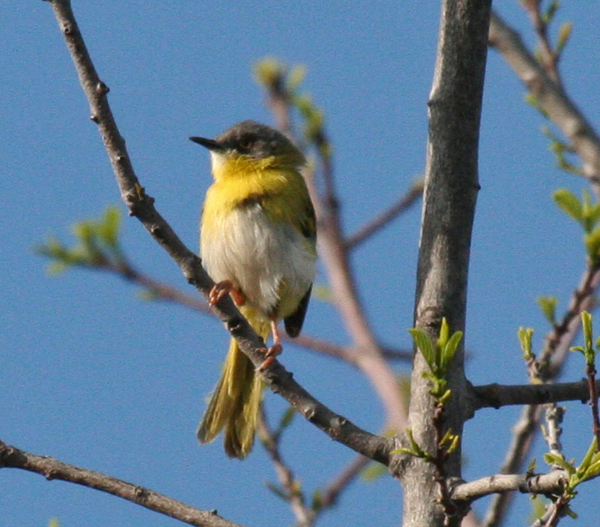
Crimson-breasted Shrike
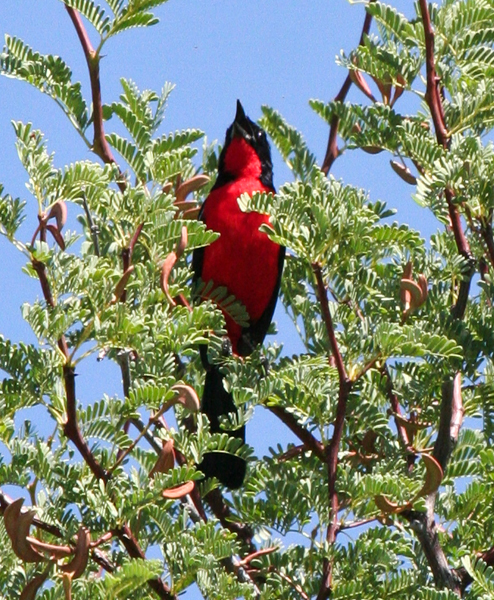
Along the road to Waterberg Plateau we saw many pipits and larks. We were fortunate to find one of my target birds, a Wahlberg’s Eagle, standing guard in a tree near its nest as we approached the Waterberg Plateau.
Klipspringers were common and relatively tame at the Waterberg Plateau Lodge grounds.
We watched the super moon just before sunset from the patio.
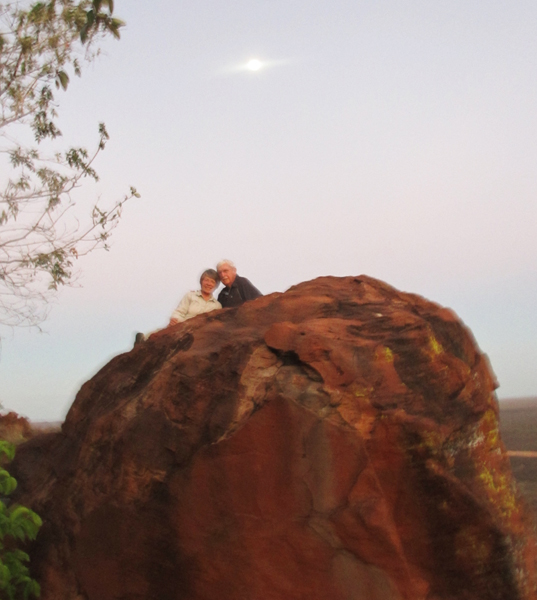
As we were finishing dinner one of the staff came to our table excitedly announcing that there was a Cape Porcupine just outside the kitchen window. We quickly left our table to go look, and indeed, there was a very large Porcupine, apparently accustomed to dining on the kitchen waste. The angle and the lighting were not good enough for a picture.
The next day we took the long drive back to Windhoek Airport with many warthogs nibbling the newly green grass along the highway.
Steve and Louise Braine are good partners in the Batis Birding Safari operation. I cannot imagine a better qualified guide for anyone seeking to see the birds of Namibia. Louise manages the arrangements, communicates with clients, and goes above and beyond the call of duty to make clients feel welcome and at home. We enjoyed our Namibia birding safari, and it was much more than a birding safari. We enjoyed the variety and closeness of the animals, particularly the 10 Antelope species seen in Namibia, adding to the Eland, Bontebok, Grey Rhebok and Cape Grysbok seen the previous week in the Cape Town, South Africa area. We also were greatly impressed with the food, accommodations and people of Namibia. We certainly hope that the rains come soon.
I returned home with my World Bird Species List at approximately 3,060, substantially more than the 3,000 that I had planned on (very conservatively) for the combined South Africa and Namibia trip.
